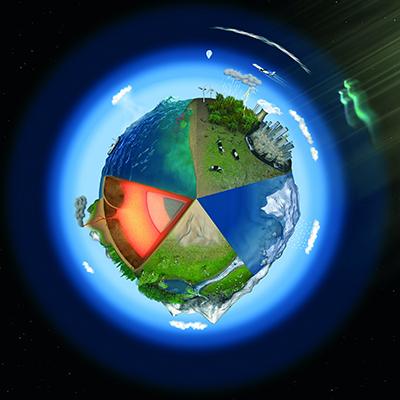
Understanding Earth Surface Dynamics: A Detailed Overview for You
Earth surface dynamics is a fascinating field of study that explores the processes shaping our planet’s surface. From the movement of tectonic plates to the erosion of mountains, this discipline offers a comprehensive view of the dynamic forces at play. In this article, we delve into the various aspects of earth surface dynamics, providing you with a detailed and multi-dimensional introduction.
What is Earth Surface Dynamics?
Earth surface dynamics is the study of the processes that shape the Earth’s surface, including the movement of tectonic plates, erosion, sedimentation, and the formation of landforms. This field combines elements of geology, physics, and mathematics to understand the complex interactions between the Earth’s crust, atmosphere, hydrosphere, and biosphere.
The Role of Tectonic Plates
Tectonic plates are large, rigid sections of the Earth’s lithosphere that float on the semi-fluid asthenosphere below. These plates move slowly over time, driven by convection currents in the mantle. The interaction between these plates is responsible for a wide range of geological phenomena, including earthquakes, volcanic eruptions, and the formation of mountain ranges.
| Plate Boundary Type | Example | Geological Phenomena |
|---|---|---|
| Convergent Boundary | Andes Mountains | Earthquakes, Volcanic Eruptions, Mountain Formation |
| Divergent Boundary | Mid-Atlantic Ridge | Seafloor Spreading, Volcanic Activity |
| Transform Boundary | San Andreas Fault | Earthquakes |
Erosion and Sedimentation
Erosion is the process by which natural forces, such as wind, water, and ice, wear away and transport rock and soil particles from one place to another. Sedimentation occurs when these particles settle out of the transporting medium, such as a river or wind, and accumulate in a new location. Erosion and sedimentation are essential processes in shaping the Earth’s surface, creating diverse landforms and landscapes.
Landforms and Landscapes
Landforms are the physical features of the Earth’s surface, such as mountains, valleys, and plateaus. Landscapes, on the other hand, are the patterns and mosaics of landforms that result from the interplay of various geological processes. Some common landforms and landscapes include:
-
Mountains: Formed by tectonic activity, erosion, and volcanic activity.

-
Valleys: Created by the erosion of rivers and glaciers.
-
Plateaus: Elevated flat areas formed by tectonic uplift and erosion.
-
Deserts: Arid regions characterized by sparse vegetation and little precipitation.
-
Oceans: Vast bodies of saltwater that cover about 71% of the Earth’s surface.
Climate and Earth Surface Dynamics
Climate plays a crucial role in shaping the Earth’s surface. Temperature, precipitation, and wind patterns influence the rate of erosion, the distribution of vegetation, and the formation of glaciers. In turn, these processes affect the climate, creating a complex feedback loop that governs the Earth’s surface dynamics.
Human Impact on Earth Surface Dynamics
Human activities have a significant impact on earth surface dynamics. Deforestation, urbanization, and agriculture can alter the natural landscape, leading to increased erosion, soil degradation, and changes in water flow. Understanding these human-induced changes is essential for developing sustainable land management practices and mitigating the negative consequences of our actions.
Conclusion
Earth surface dynamics is a vast and complex field that offers a fascinating glimpse into the dynamic processes shaping our planet. By studying this discipline, we can better understand the Earth’s past, present, and future, as well as the role we play in its ongoing transformation.




